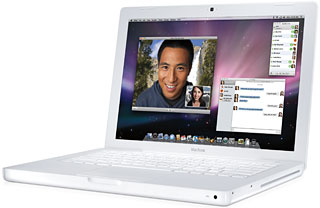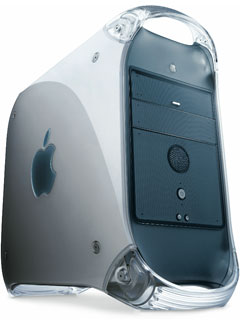Ted Hodges’ recent article, The Sun Has Set on the G4, brought to light one mostly overlooked facts about the MacBook’s introduction: The G4 is now out of Apple’s lineup.
 This really brings the reality of the Intel transition front and center. At a much faster pace than anyone anticipated, Apple is breaking away from the PowerPC and embracing the x86 architecture.
This really brings the reality of the Intel transition front and center. At a much faster pace than anyone anticipated, Apple is breaking away from the PowerPC and embracing the x86 architecture.
 While I’m all for that, it’s hard to believe that the G4 – once the gigaflopping supercomputer brain of the Mac – is now yesterday’s news and destined for low-end status at a rapid pace.
While I’m all for that, it’s hard to believe that the G4 – once the gigaflopping supercomputer brain of the Mac – is now yesterday’s news and destined for low-end status at a rapid pace.
It won’t be long before you’ll be picking up G4 towers for less than a $100.
End of the G3 Market
Sounds crazy, doesn’t it? But low-end Blue and White G3s now sell well south of $100. If you’re happy with a Beige G3, they can be had for about $25 on eBay and various other places around the Net.
It wasn’t that long ago that a G3 was still very speedy in our minds, commanding respect and a good price on the used market. Once the G3 left the Apple lineup (with the introduction of the iBook G4 in late 2003), it wasn’t long before its value plummeted.
 The Coming G4 Market
The Coming G4 Market
History tells us that it won’t be long before the G4 occupies the same place in the used market. In fact, it may make it there even quicker. This can partly be attributed to technology continuing to evolve at an exponentially faster pace, “obsoleting” the G4 at a faster pace than its predecessors.
This is partly because of the implications on the Intel Macs. Not only do the Intel machines offer significantly better processor/system bus/memory speed specs than any G4 Mac, they are considerably more future-proof than a G4.
How Much Longer for PowerPC Apps?
Do we know if there will still be Universal Binaries five years down the road? History tells us probably not.*
We Mac users have seen “universal applications” before -when the 680×0 to PowerPC transition started in early 1994. Known as “fat binaries”, applications could contain both 68k and PowerPC code, taking advantage of whichever processor your Mac had.
But by 1999 – five years after the transition started – there were hardly any fat binaries left, and nearly all new software required PowerPC.
The way technology moves in this day and age – and the overwhelming success of the Intel Macs in their first five months on the market – I predict a much quicker demise for PowerPC Mac applications.*
Implications for Pricing G4s
In reality, this is only bad news for folks who’ve made a living on trading and selling G3 and G4 Macs. The boxes that they used to count on being able to move for a good price will now sometimes cost more to ship than they are worth.
For the buyers, though, the drop in value of G4 Macs presents an unprecedented value.
Mac OS X 10.4 Tiger runs quite well on nearly all G4 systems. Some older systems without Quartz Extreme support don’t fare as well as those that do have it, but overall Tiger (and also OS X 10.3 Panther) is highly optimized for PowerPC systems, providing you with a very powerful option.
Let’s stop and think about what you do with your Macs every day. Email, web surfing, instant messaging, and maybe some word processing, spreadsheets, and graphics work. G4s handle this very well right now and will continue to do so with current software for a long time to come.
The nature of the technology companies is to sell you something new every year. But when you can get a G4 for $100, there is going to have to be a very “killer” new app come along that is going to justify the continuous upgrade cycle.
How Much Mac Do You Need?
In a nutshell that is the essence of Low End Mac. How much Mac do you need?
I believe we are entering an era where the low end will without question provide you with more than you need. It’s a lot different than when Low End Mac first appeared on the Web in 1997, when the low end represented a compact Mac with a black-and-white screen, which were described at the time as “fine for word processing, email, and a few simple games.”
Imagine the new low end – “fine for word processing, Web browsing, 3D gaming, digital video editing, Photoshop, and iChat AV.”
The march of time can leave you feeling left behind in technology, but I think this is actually an exciting time to embrace the low end. The value equation of processing power for the money has never been better, and it’s only going to get better.
* The first Intel-only Mac OS, OS X 10.6 Snow Leopard, shipped in August 2009, just over three years after this article was first published. In 2014, universal binary apps are rare.
Further Reading
- The Sun Has Set on the G4
- The Future of PowerPC Macs in the Intel Era
- Does Technology Improve Our Lives or Just Complicate It?
- Picking a Power Mac G4: How Much Mac Do You Need?
Keywords: #endofg4macs
Short link: http://goo.gl/7L17lf
searchword: endofg4macs

